Speaking from personal experience, it is very sad to be camped alongside an inviting lake or reservoir, and be a land-based creature that is only able to interact with the very edge of the shoreline by walking along it. Of course, these days we would take any sort of wild camping — even without a watercraft — over sitting in a private RV park and fretting about a global pandemic. But I digress.
Staring out longingly at a body of water may make for wistful Instagram-ready images, but that’s not what we wanted for our continuing RVing experiences. By way of explanation, I present a small selection of the bodies of water we have seen but did not experience by water in our first two years of full time RV travel:
So after two years on the road we finally decided to fix this shortcoming by buying a boat. We knew a kayak would give us a chance to explore more environments and change our hiking-focused perspective on the parks we visit. We also knew that we preferred a tandem kayak for the space efficiency of having just one boat, as well as increased paddling range (two sets of arms are better than one!). We ended up with the Driftsun Almanor 130, a two-person inflatable touring kayak.
We spent a lot of time debating this purchase, so I decided to write about our decision process and our experiences with it so far in case it can help others. The main alternatives we considered but rejected were:
- Advanced Elements AE 1007. This inflatable has a rigid spine that results in a paddling performance much more reminiscent of a hard sided kayak. Our biggest concerns with this boat were the weight/size, and the price.
- Sea Eagle 370 Pro. This boat is rated for Class III rapids and can support an incredible amount of cargo, but sits much higher in the water than a standard touring kayak. Our primary concern with this boat was comfort while paddling.
Hard-Sided vs. Inflatable
There is no question that hard-sided kayaks are a durable and reliable way to get out on the water in a variety of different terrains, but they are also large and require specialized storage solutions. Since we have only a tonneau cover on our truck bed, not a full cap, we don’t have an easy way to attach a roof rack for a kayak. And adding a rack on top of the truck would create additional height and therefore clearance issues, making it impossible to take the truck into parking garages where we barely fit now at 6’9″. We have seen some RVers with boats mounted on their rigs, either vertically on the back or on the roof, but with all the curves on our exterior there is no obvious place to mount a kayak on our Airstream. Also, that solution creates its own challenges — how does the kayak get to the water if the boat ramp is not close to the campground?
For us, we saw no reasonable way to carry a hard-sided kayak, so an inflatable was our only option. But we’ve been quite happy with the inflatable, and it could be a good choice even for people who have the option of a hard-sided. For example, the light weight and easy maneuverability of the boat would make it handy for a solo traveler who might not want to wrestle a heavy boat onto the vehicle roof alone.
Dimensions and Weight
Since we knew the kayak needed to fit either in the bed or the cab of the truck, a small size was a critical factor for our decision. According to the official specs, the Driftsun Almanor 130 weighs 36 pounds (boat only) and when deflated it is 24.5″x 21″ x 10″ (5,145 cubic inches). In contrast, the Advanced Elements AE1007 weighs 52 pounds and when deflated it is 35″ x 21″ x 12″ (8,820 cubic inches, or 40% larger). If we had chosen the Advanced Elements, it probably would have needed to reside in the back seat of our truck, using up space that we normally use for groceries. The Sea Eagle is another compact choice at 32 pounds with dimensions of 31″ x 19″ x 8″ (4,712 cubic inches).
Our boat came with a nylon backpack-style bag to carry the rolled up hull, and we were pleased to find that the boat fits in the bag easily even if not folded up perfectly tight. And of course the kayak hull alone is useless; other necessary gear includes the seats, paddles, the air pump, and personal flotation devices (PFDs). Ken was able to make room in our truck bed for all the kayak gear (hull + accessories). I’ve included a picture with labels of some of the other gear we carry, all of which are necessary items and all of which take up precious space.
Cost
Our boat was $700, and it came with everything except PFDs. Included in the box: the inflatable hull, a manually operated air pump, two seats, two foot rests, a removable skeg, two paddles, and a carrying bag. The cost is comparable to the Advanced Elements model we considered, but the Advanced Elements comes with only the hull, seats, skeg, and carrying bag. Advanced Elements purchasers must provide their own paddles and air pump. The Sea Eagle was the most affordable option that we considered at $350 for a complete package including the hull, seats, air pump, and paddles.
The inflatables can obviously cost as much as a hard-sided kayak, but since we had no feasible way to carry a hard-sided that was not the relevant cost comparison for us. Instead, we looked at the cost of renting boats in various places as the only viable substitute for us, and assuming a daily rental cost of $50 the inflatable will pay for itself after 14 uses. So far we’ve used it 7 times and it still looks and performs like new, so we think it will substantially outlast its break-even point for us. We also think there is extra value in having the boat available to us in places where there may not be concessionaires offering boat rentals.
Inflation & Deflation
Inflating the hull with the included manual pump is fairly easy. There are three air chambers — two on the sides and one in the floor — and they do not require a high level of inflation. The maximum pressure in the side chambers is just 2 psi while the floor is capped at 1 psi, so the manual pump is more than sufficient to achieve firm inflation. We can generally get the boat fully inflated and assembled with seats within 15 minutes. Once the air chambers are full, we just clip the seats into place, attach the footrests to velcro strips along the floor of the boat, and click the removable skeg into place on the keel of the boat. Allow my lovely assistant to demonstrate the process:
Packing up post-paddle is also quick. Unclip the seats, pull off the footrests, unclip the skeg, release the three air valves to let the air whoosh out, then roll up the flattened boat. It needs to dry out before being packed into the storage bag, so we just lay the boat and seats out in our picnic table area to dry for a few hours when we get back to camp.
Performance
We have been happy with the performance of the Driftsun Alamanor 130. Compared to a hard-sided boat, it is more buoyant and therefore a bit more stable when getting in and out. Steering is comparable to a hard-sided boat, and maybe even a smidge more responsive. The skeg on the bottom of the boat theoretically improves tracking, and in general we find the boat to be easy to maneuver. If you’re prone to over-steering and swinging about wildly in a hard-sided kayak, you will do the same in an inflatable. Not that we would know anything about that, of course.
The rubberized bottom of the boat seems pretty rugged, and the air chambers are separate pockets inside a tough outer nylon hull. As a result we have no qualms about beaching the boat on sand or even a concrete boat ramp. However, I would not be comfortable taking the boat out in oyster beds or areas with extremely sharp rocks or corals.
The weight and buoyancy of the boat work against it in some conditions, however. We find paddling in windy or choppy conditions to be particularly challenging, because the boat has no weight of its own to resist the wind. That means it is all up to the lazy humans powering the craft. As a result, we try to avoid paddling in wind at all costs.
Comfort
The biggest surprise about the inflatable is how comfortable we find it. With our seats wedged between the two side inflatable chambers, we have plenty of support for our lower torsos and hard paddling doesn’t cause us to slide around in our seats. Our seats are basically sitting on the floor of the boat, and the interior depth of just 7.5 inches means that even short people like me can easily hold the paddles out of the way of the sides of the boat. The total length of our boat is 13 feet, and it juuuuuust gives us enough room to both extend our legs to a comfortable position rather than being scrunched up.
The paddling posture was our biggest concern with the Sea Eagle. That boat is much deeper (over a foot deep), and the included seats are more chair-like. The boat is six inches shorter so there is less leg room, but that probably works because passengers are sitting in a more upright posture. We felt it would be a bit weird to sit so high above the water, and potentially top-heavy. The awkward paddling position was really our main objection to the Sea Eagle, but we know other RVers who have this inflatable and love it, including Cherie and Chris at Technomadia and our pals Ashley and Art of @ateamlife.
Another important consideration is the weight rating. The Almanor weight capacity is 400 pounds, which works for us because we are both under 200 pounds and carry very little gear with when we kayak for a few hours at a time — just the seats, paddles, PFDs, water, snacks, and pocket cameras. For larger people, or people who intend to carry a lot of heavy gear (big camera equipment, overnight camping gear, large dogs, etc.) other inflatables would be a better choice. The Advanced Elements is rated for 550 pounds, and the Sea Eagle is actually rated for three passengers with an enormous maximum capacity of 650 pounds.
So, to sum up, here are our thoughts on the inflatable Driftsun Almanor 130:
| Pros | Cons |
| Small size when deflated | Hard work to paddle in wind |
| Light weight | Durability (?) (TBD) |
| Complete package (everything but PFDs) | Limited space and carrying capacity for extra gear |
| Easy to inflate and deflate |
We’re very happy with our decision to buy the Alamanor 130. It’s easy and comfortable to use, and we’ve achieved our goal of being able to explore new and different outdoor settings. The boat has really been ideal during this time of pandemic, as we found ourselves spending a long stretch of time in a spot where many of the best experiences are on the water.

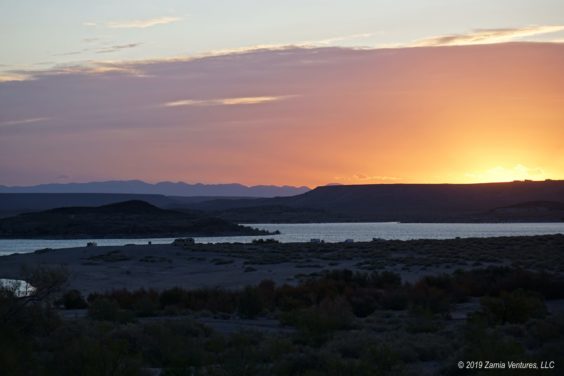
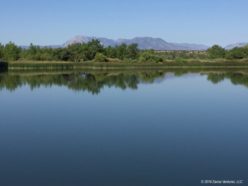





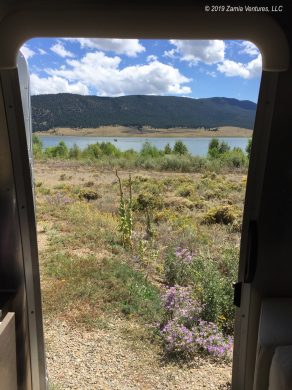
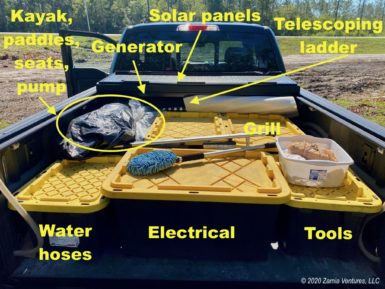
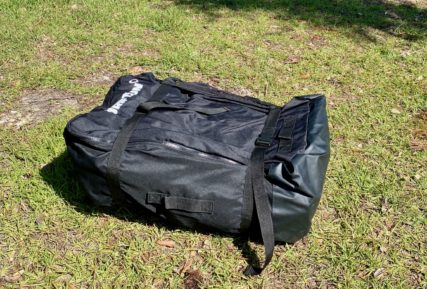
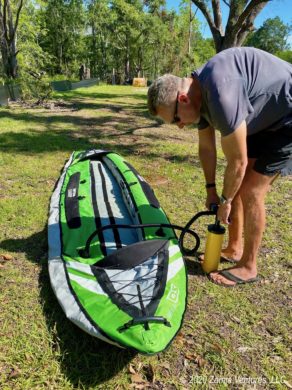
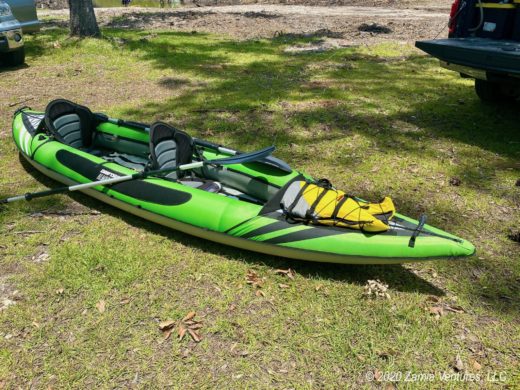
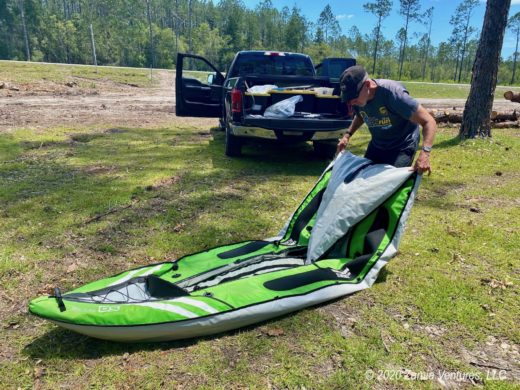
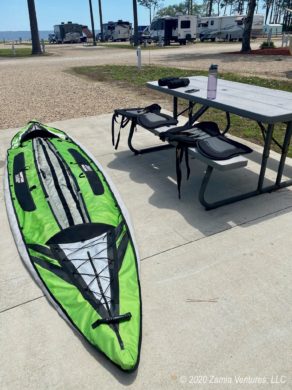
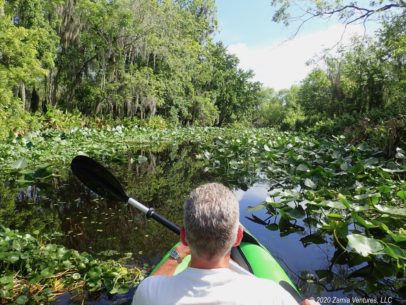
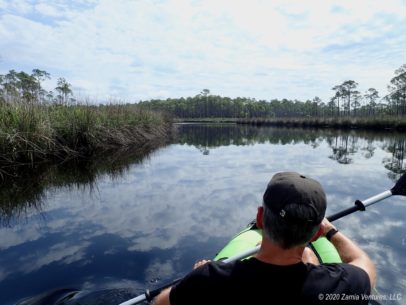
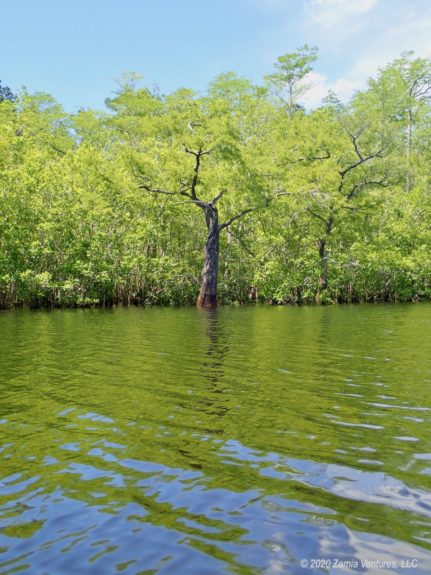
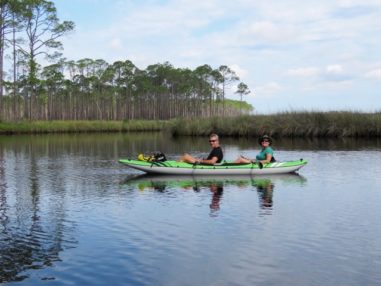
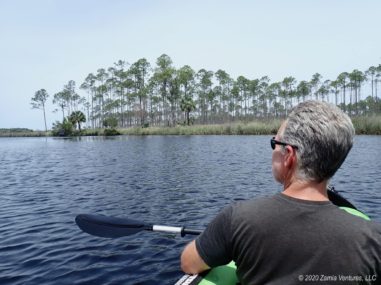
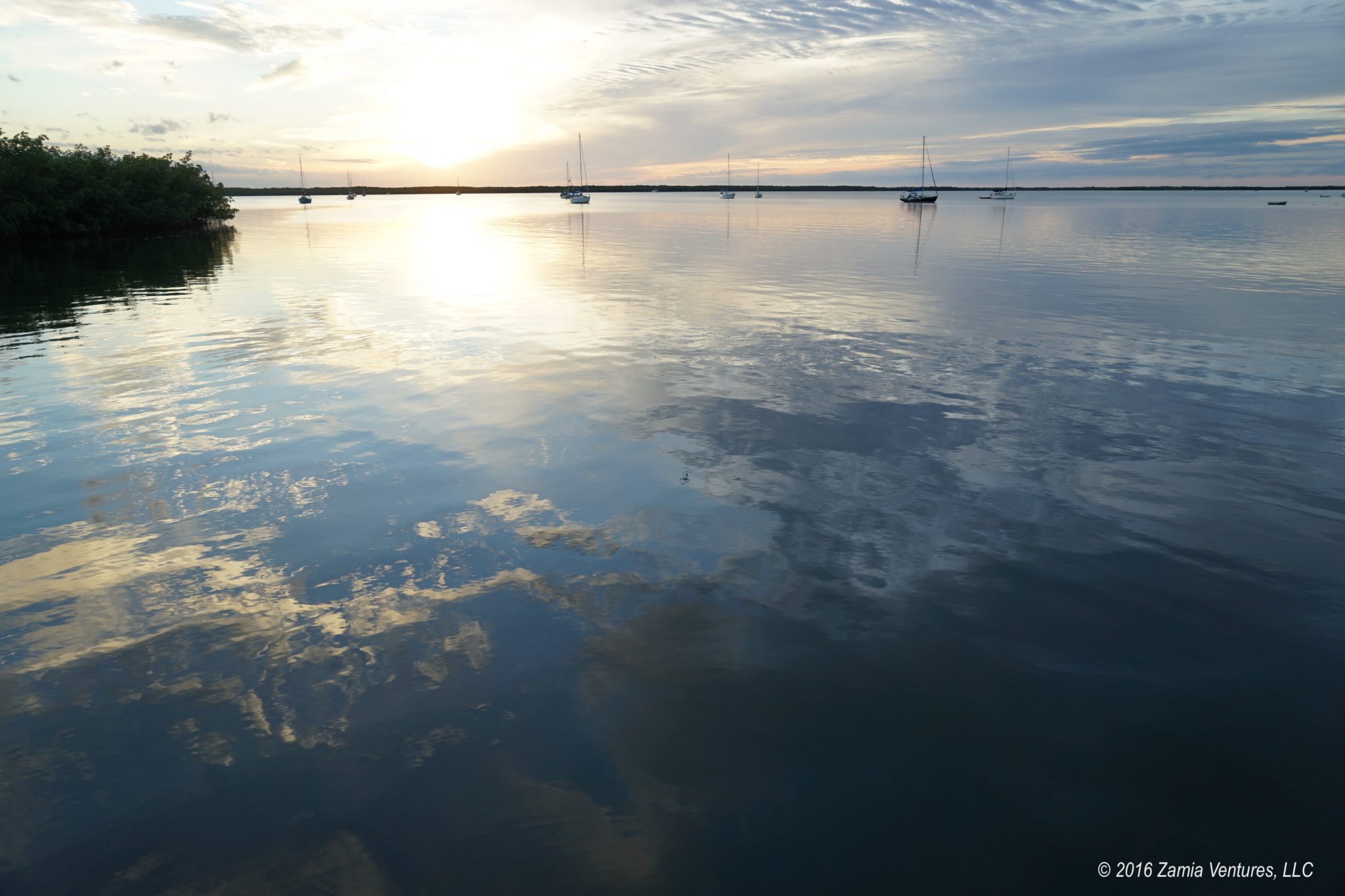

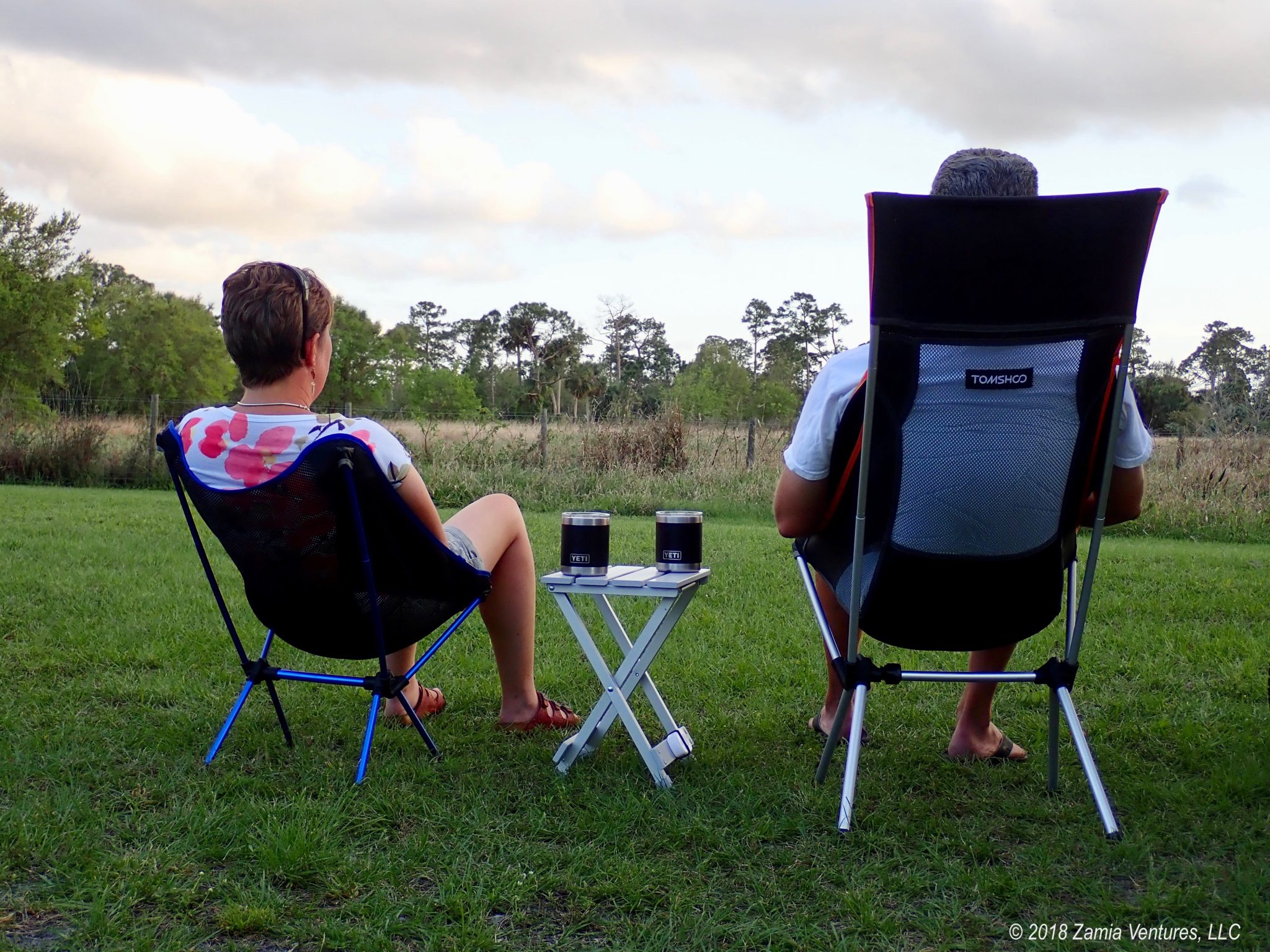
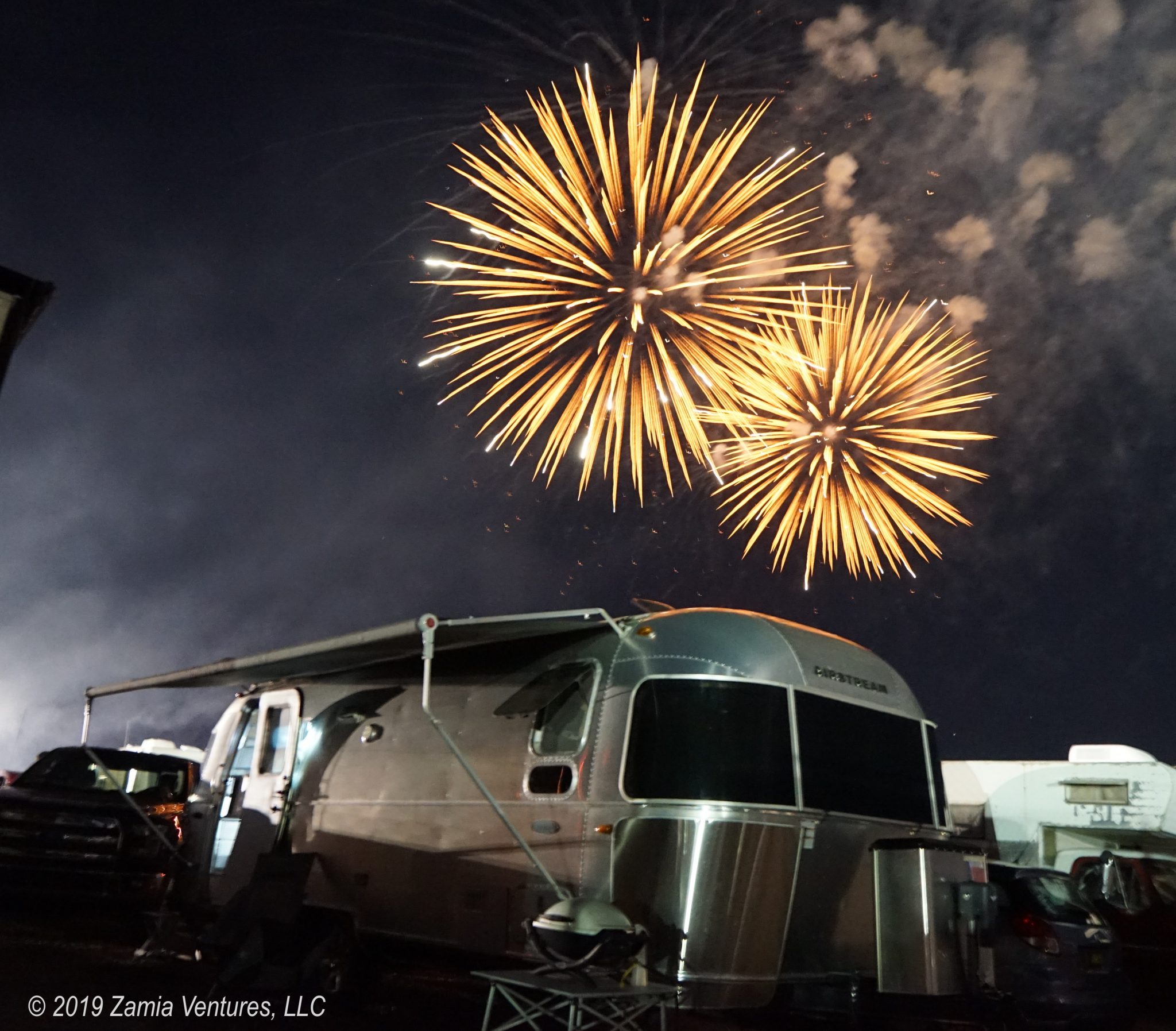
Well, we are certainly happy that you have a kayak. So that’s an added benefit, LOL. Seriously, it’s a very sweet boat you have, and we’ve been impressed at how quickly you and your lovely assistant can set it up and take it down. If we didn’t already have a kayak that serves our purposes (behemoth though it is), we would be swayed by your review.
We’re looking forward to more kayaking with you two. 🙂
Having a new activity to do with friends is of course another important benefit of the boat. I don’t think I was clear enough in the post that we really should have made this purchase sooner. It has added an important new dimension to our explorations, one that we were totally missing out on before. Can’t wait to do more of that with you guys!
Ben and I got a $90 inflatable off Amazon and it is a bargain, but the paddling comfort could be better. Your description makes an upgrade sound tempting, though we may end up going for a hard-sided boat as we are more stationary people. 🙂
We thought about going much cheaper in case the inflatables are not durable, but we ultimately decided that if the boat wasn’t comfortable we wouldn’t use it enough to be worthwhile even at a low price point. I think the hard sided would work well for your location, plus it would be more of an all-season boat, but there is the question of whether you want to install a roof rack for it. Based on the reviews I read, even stationary people like inflatables because they are so easy to throw in the back of the car.
Ah, the joys of a tandem paddle around a local lake and the ensuing arguments! Obviously, you two are much more in love than are we LOL We had a tandem inflatable for years, and really did enjoy it for the most part, but ours was far heavier and not conducive to RV livin’. I love my single inflatable backpack kayak, though it’s a tad too small for TBG and, of course, doesn’t allow us to get out on the water together. Your setting up shop in Florida makes it pretty essential to have a water craft, and I know you’ll get lots of non-contentious use out of it!
I find it very hard to believe that you couldn’t find room for the tandem in your RV, with all its outside bays. Sounds like my decision not to bring an iron if you ask me. I hate ironing, so there was NO WAY we had room to bring an iron. And T-shirts are very comfortable. Anyhoo, being in Florida will be perfect for using the new-ish craft. Maybe someday we will even leave the state and use it in other places! Well, one can dream.
Hi. We just got this Kayak and test inflated it to learn how to do it before maiden launch. I have a question about the quick locks with no straps at the top of the seats. Are there supposed to be straps there to stiffen the back? Thanks.
I’m not sure if the design has changed since we bought ours, but our seats have 4 nylon straps with metal clips that go on the plastic tabs inside the inflated sides. The only clips and straps that are really necessary are the ones that run forward from the seat backs, since the weight of the person in the seat will hold the seat down and back. It took us a little while to get the seat backs adjusted to the locations and angles that we preferred and then we marked which seat was front or back to make it easier to assemble the next time. Good luck!
Thoroughly enjoyed your detailed review on the Driftsun Almanor 130. It’s evident that a lot of thought went into your decision, especially considering the challenges of RV travel. The kayak seems versatile and user-friendly. I’m curious, how does it handle in faster-moving waters or rivers? Have you had a chance to test it in such conditions?
Hi Ralph, thanks for the nice comments about the post! We really do enjoy the inflatable kayak and it has served our needs well while RVing. However, windy conditions and fast-moving rivers are a bit challenging. I think that the boat’s very light weight — which is a huge plus when carrying it to a launch point — makes it more susceptible to being tossed around by wind or currents. We paddled upstream in some fast-moving currents, and I felt that we did more work than would have been required if the boat had more weight to provide momentum. That being said, we are definitely not expert paddlers so we prefer calm conditions no matte what!